A Hat in Time (Windows, Mac OS X)/Version Differences/Special Builds/September 29 2018 DLC 2 Blockout Build
This is a sub-page of A Hat in Time (Windows, Mac OS X)/Version Differences/Special Builds.
| This page or section details content from the 2018 A Hat in Time DLC Leak. Check the 2018 A Hat in Time DLC Leak category for more pages also sourced from this material. |
Not too long after DLC 1 released, Gears for Breakfast accidentally included four early blockout maps for their then-up and coming DLC 2, Nyakuza Metro. This happened on September 29 2018, and the maps weren't removed for several hours, most likely because very few people immediately noticed their inclusion. The maps contained a very small amount of early assets for the level, but more interestingly, provided an early version of the cat train object and partial coding for early versions of the cat vacuums. The levels are all independent of each other, and are not designed to be streamed together like the final level. The most unfortunate part about the leak, though, is that the maps don't normally load. Trying to load one of the leaked maps will have the game throw an error message claiming that the base class file for the cat vacuums is not always loaded, and then close the game. To bypass this, the maps must be decompressed and then the cat vacuums must be hex-edited out of the map with a different object that is always loaded. Even so, much like the early Arctic Cruise leak, the game will crash shortly after loading the map due to the proper textures for objects not being present in the cooked 'textures.tfc' file. Texture pointers will point to invalid areas in the tfc file, cause memory corruption, and crash.
Early Models
There are four early models founds in the assets for the level, which are:
An early version of the red food truck stalls.
An early version of a bench with a map hologram above it.
An early version of one of the floating departure signs.
An early version of the cat trains.
The red food stall truck looks the exact same as the final model does, but has 10537 vertices as opposed to the final's 10857 vertices. It also comes with an LOD model, which is 2762 polygons and 3014 vertices. The final's LOD model is 2761 polygons and 2920 vertices. Finally, the early version is dated September 26 2018, and the final's is dated October 23 2018.
The early bench model also looks identical to the final's, but lacks an LOD model. It has the same number of polygons and vertices. The early version is dated August 29 2018, while the final version is dated February 5 2019.
The early departure sign model is slightly lower-poly than the final version. The early version is 2836 polygons and 1991 vertices. The final version is 2856 polygons and 2106 vertices. The models look the exact same, although the early model has only a single material slot, while the final's has two. The second material slot was added for a separate material for the spinning blade effect above it, whereas originally it seems the plan was to have the spinning blade be part of the same material for the monitor. As for import dates, the early version was imported on August 24 2018, and the final version was imported on October 2 2018.
| Model Render | Metro Blockout Leak (August 18 2018) - Final (March 10 2018) |
|---|---|
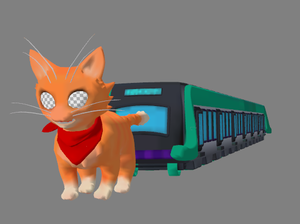 |
 |
The last early model is the most interesting one, by far. It's the cat train. The model appears to be both the cat and train combined, whereas the final has the two as separate models. No animations exist for the cat train at this point, and the cat isn't rigged. It doesn't even have any animation bones. The model for the train itself doesn't appear to have changed, rather, some adjustments were made to the cat model. Its paws are positioned slightly differently, and it has many more materials slots compared to the final's two slots. In terms of polygon and vertice count, it has less than the final's, but more than the LOD of the final. The final's combined total of polygons and vertices with both the cat and the train is higher than the early version's, but the combined total of the LODs is lower than the early version. It's currently unknown where polygons and vertices were saved on the models. As a footnote, for additional development reference, the final giant cat model alone is dated February 13 2019.
Cubemap Details
Given how limited access is to the actual cooked levels in the build, looking at the cubemaps for the levels can provide some insight on a few things that may not be able to be seen upon playing the maps or porting the maps to the current version of the game.
Route A (Main Station and Yellow Overpass)
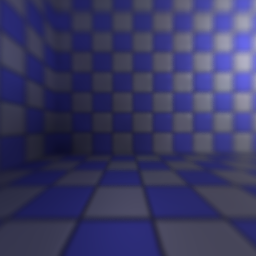
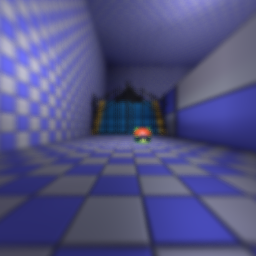

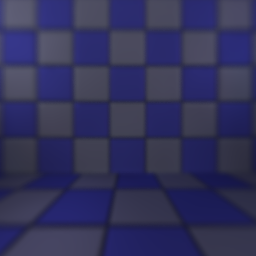


A cubemap of the starting area, showing the cat vacuum in front of the placeholder gate.
Route B (Green Clean Station)




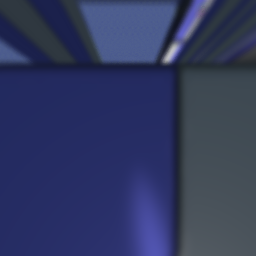

A cubemap of an area near the end of the level, showing a couple cat vacuums attached to walls.
Route C (Bluefin Tunnels)

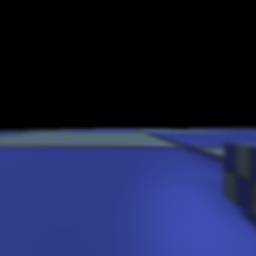
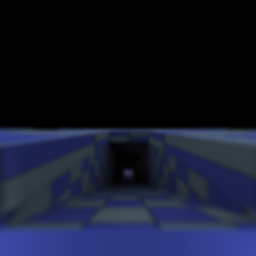
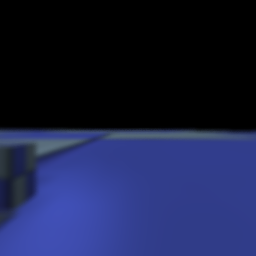


A cubemap of the very start of the level, showing the open, barren floor above the main level.
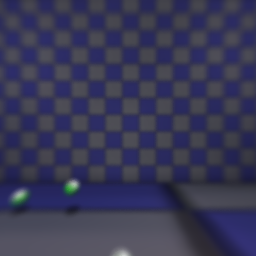
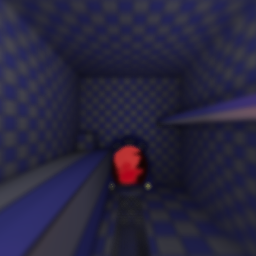
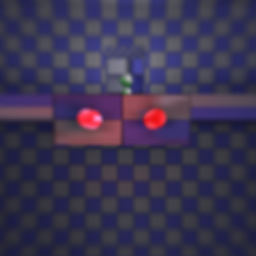

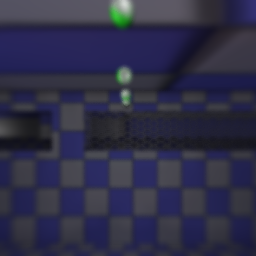

A cubemap of one of the rooms deeper into the tunnels, showing a couple decorations, some Pons, and the unused alien car door models being used. This room exists in the final version, as well.
Route D (Pink Paw Station)

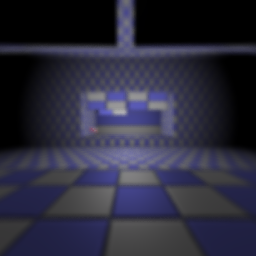
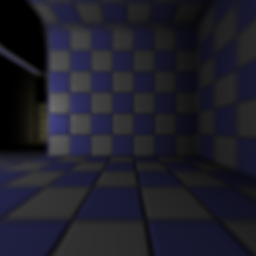

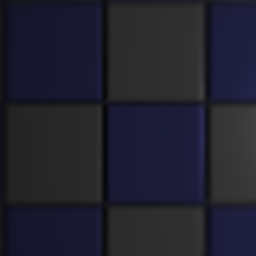

A cubemap of the very start of the level, with two visible tunnels for trains to run through.
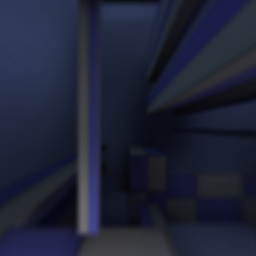





A cubemap of an area near the end of the level, showing a hookpoint and some platforming sections.
Level Differences
The video on the right provides an in-depth look at the early Nyakuza Metro maps after porting them to the current final game and substituting the cat vacuums and cat trains with their final counterparts. The cat trains, however, are a custom version of the final trains, with extra programming and features all derived from the early version of the cat trains. More information is available in the video's description, but will still be listed here regardless.
General
- There are no ticket gates yet. They do have a class file in the build's code, but no model is supplied and any coding they may have is missing. Same goes for the metro ticket items. Hat Kid did have a ticket scanning animation by this point, though, which was accidentally included in the very first build of DLC 1.
- Metro Cat NPCs do not exist yet. Neither does Empress or her 'jewelry shop'.
- Cat vacuums use a different design, with more metal parts and glowing green lights. This design still exists in the final game and is used in some places in the level, but never as an active object that the player can bounce off of. (In fact, the LOD models for the final version's cat vacuums are from this alternate design!)
- All of the areas of the metro are in their own maps at this point and are not designed to be streamed into a single map. The final game builds the level by streaming maps in, but even then, has almost all of the platforming areas in a single map.
- There are no Power Pons yet.
- There are no manholes yet. According to unused early Nyakuza Metro localization found in the non-updated Nintendo Switch release of the game, this was evidently the case at least until December 2018. Only four levels were originally planned, but at some point afterwards, an additional Time Piece was added for each area except Bluefin Tunnels (although another Time Piece was planned for that area as well, according to unused Empress dialogue.)
- Food stalls are present but the metro food system has yet to be implemented.
- Absolutely no new hat flairs or Badges are available or even made yet. The baseball bat weapon also does not exist yet.
- Hologram rail tracks for the cat trains do not exist yet. Instead, the train tracks are cubes with a red wood material applied to them, shown below.
Route A (Main Station and Yellow Overpass)
The starting room maintains the same layout as the final version, however, upon taking the train to the main area, there is no platforming sections or cat vacuum puzzles to be solved before arriving. You just go straight there.
You arrive on the opposite side of the main station compared to the final version, where the jewelry shop is in the final.
Instead of ducking into a tunnel, the cat train that takes you to the main station turns left into a corridor and abruptly disappears, reappearing back at the start of its route.
Due to the other areas of the metro being in their own maps at this point, Green Clean Station, Bluefin Tunnels, and Pink Paw Station are not accessible from the main station.
There are no food shops or lounge areas. Many backgrounds details are completely absent at this point. A blockout of the large elevator in the center of the station exists, however.
There is no information help desk in front of the entrance to Yellow Overpass.
The unused food shop models are used next to the first train in Yellow Overpass.
There are more sign hazards to dodge while on top of the trains compared to the final version.
There is a cat vacuum pacing back and forth after the second train. This was removed in the final.
You can bounce on the awnings on the food trucks in this area, which you cannot do anywhere in the final version.
The shortcut from the middle of Yellow Overpass to the main station is just a block that slides out of the way upon pushing a button, whereas in the final it's a ticket gate. Pushing the button actually saves a level bit to your save file, so it'll stay open on future visits.
There is no area off to the side where you can buy a metro ticket.
There's only one hookpoint to transition to the last train before the Time Piece instead of two, and it's just a lantern hookpoint instead of a floating monitor.
Route B (Green Clean Station)
The level is open at the bottom, with a large flat floor instead of being on top of buildings.
There's a section at the bottom where the player can bounce on cat vacuums to reach the top of the level, after the player opens the ice panel at the top.
The cat vacuum that takes the player up to the start of the level is not tucked away in a back alley, but instead patrols back and forth under an arch structure.
There is no back alley behind the first cat vacuum attached to a wall.
The area in the final where the metro ticket is sold is a small, narrow platform with a cat vacuum patrolling back and forth on it.
The ice panel shortcut is to the left when the player encounters it. In the final, it's on the right, tucked away in the far back corner.
There is no platforming segment on platforms hanging from the ceiling, and the level design at the end differs a fair amount from the final. The player is semi-encouraged to use a cat vacuum to bounce up onto the train to reach the Time Piece, but the train is not required to access it. The Time Piece is much closer to the buildings than it is in the final.
Route C (Bluefin Tunnels)
Before the first corridor where you move against a train while hiding on the right and left sides, there's a part missing where you duck through a hologram rail while avoiding the train that travels on it.
The room that you enter from underneath that you have to wait for a train to move past has an extra section on the right beneath the floor that was removed in the final.
The unused alien cat door model is used in this level, starting in this room. Before the giant cat flap doors were made, it seems these were being used as the doors trains would enter and exit from.
The vertical Pon line in this room was removed in the final.
At the section in the final version where the player reaches a large, open room, instead there is narrow, curving corridors with a train junction just before the end of it. The early trains have no coding to accommodate waiting for another train in the way of its path to move out of the way, so the trains clip through each other.
After this, in the final, there's a room where you collect Time Piece shards and is the final room of Bluefin Tunnels. In the early version, there is instead something completely different: a chase sequence. Upon walking out of the previous corridor, the player will touch a Trigger Volume and activate a train on the left while at the same time opening doors in the new corridor and close the path behind the player, locking them in the new corridor. The early version of the cat trains are programmed to one-shot the player if they get run over from the front, so this becomes a very tense and difficult chase, where the player must move ahead rather quickly and navigate through the obstacles to reach the end of the corridor. At the end of the corridor is a hole blocked by a dweller wall. Going through the hole drops the player into another chase sequence, and the player must navigate through more obstacles until they reach a long pit that isn't possible to cross. At this point, the player is intended to hop on top of the train and use it to cross the gap. After passing through one more dweller wall, the Time Piece awaits on the left.
Route D (Pink Paw Station)
The level begins underground, in front of two train passages. A few cat trains wait at the start of the first tunnel, deactivated, and are strangely set up to only activate if the player goes all the way to end of the tunnel and touches a Trigger Volume there. However, for whatever reason, it fails to work. The player has no need to even go down the tunnel to begin with, so the set up here is quite odd.
On the other side of this tunnel is another tunnel, which exists in the final game. The two trains at the start of it are set to wait for the player to board them to begin moving. While riding the trains, the player must dodge some more sign hazards, like in the final.
The train on the side where the vent is that the player must go into to proceed in the level slows down at the end of the corridor, to make it easier for the player to access the vent.
The cat vacuum inside the vent bounces the player up into a square hole, and must bounce a cat vacuum that patrols the perimeter of the room to escape it.
There is an arch structure with a cat train running under it. The structure was removed in the final, and a food truck stall was put in its place instead.
The dweller platforms before the first hookpoint are not present in the early version. The hookpoints are also, again, all standard Mafia Town hookpoints and not floating monitors.
The platform that has a shortcut and a food shop on it in the final is mush smaller and does not extend to the ends of the room.
The dweller wall here is a solid block instead of bars.
There is no back part of the level at the top that would lead back to the main station.
Coding Differences
Cat Vacuums
While it comes in a few different variants like in the final, unfortunately, a large chunk of this object's coding is missing. The full version of the object's coding can be found in the initial release of DLC 1. However, it seems that it was likely worked on since then, as the metro maps expect the mechanic of the vacuum chasing a muddy player to work. The coding for that mechanic isn't present in earlier builds and due to the missing coding, it's not really possible to know if that functionality was actually programmed at this point. The missing coding is because its base class is not yet native, and thus is not always loaded. This problem is exactly why the levels normally fail to load. Due to the base class not getting properly cooked into the maps, just about all of its coding is missing. The coding for the sub-variants are still intact, though.
Cat Trains
Very different from the final version. The coding for the trains is entirely non-native at this point too, which has the ugly side effect of making the game lag really badly when many of them are loaded at once. Aside from the model difference discussed above, the trains have numerous features that were changed or scrapped for the final version of them:
- They were planned to be able to change color somehow. No coding is present in the class file for this behavior, but there is a boolean variable in its class file that would dictate whether or not it could change color.
- The trains don't bend yet.
- The trains are programmed to one-shot the player if the player is hit by the front of the train dead-on. This was toned down in the final to just taking a single point of damage and/or respawning.
- The trains can speed up and slow down at specific parts of their routes. They can even stop completely at certain points on their routes for a customizable amount of time.
- The trains can be assigned a 'station volume', and if the player is inside the station volume when the train reaches a certain point of its route, it'll stop completely. The train will then only begin moving again when the player exits the volume.
- The trains can also be set to come to a stop at a certain part on their route and not move again until the player actually boards the train.
- Trains can start 'deactivated', and won't move at all until toggled in Kismet programming.
- Trains cannot yet spawn duplicates of itself on the same route.
- The paths that guide the trains along are also different at this point, and use a class called "Hat_Train_Track", a class which is completely absent from the final version. Each point on the track, mentioned above, can be set to adjust the train's speed or come to a stop at it.
- There were originally junctions on train paths, meaning that trains could branch on to multiple different paths at a single point on their route. The route a train would take at a junction could either be preset or decided at random.
- The train routes in the early levels are much more jagged, lacking the smooth corners the final has. This is because the train track points in the final use native code to generate a bunch of sub-points that the trains use when moving around, instead of the actual train track points themselves. This method of moving the trains around, along with being partially native, greatly improves the game's performance when multiple trains are loaded at once compared to the early versions.
